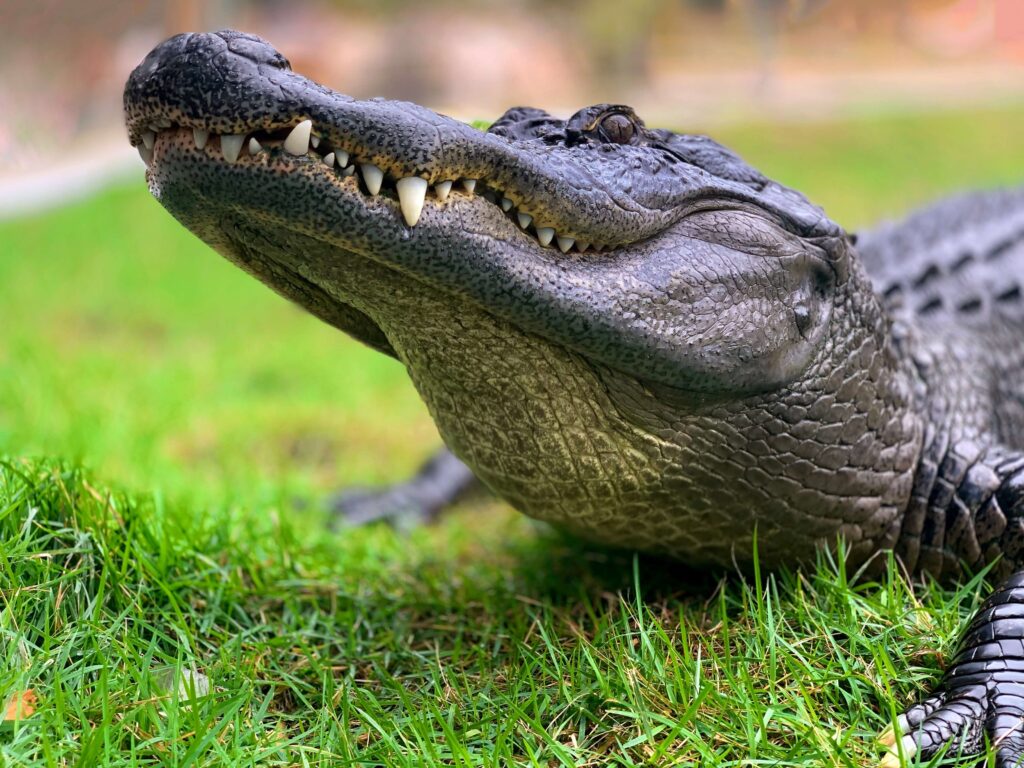Crocodiles are very interesting and one of the strongest creatures on this planet. There is so much that we dont know about these species. From their remarkable physical features to their predatory behavior crocodiles have fascinated and terrified us for centuries.
If you are interested in knowing more about these creatures this article is for you. We are going to dive deeper into their world and discuss some lesser-known facts about crocodiles. We don’t know much about these creatures as we cannot pet them. Moreover, crocodiles are large and predatory creatures that are found in freshwater and coastal habitats as well. They are known for their powerful jaws, sharp teeth, and thick skin. So let’s dive deeper into the world of crocodiles.
Features and characteristics of Crocodiles
Before we start with the facts it is important to know about the features and characteristics of crocodiles. They are known for their powerful jaws, sharp teeth, and thick skin. All of these help them to catch their prey. However, crocodiles are large carnivorous reptiles that belong to the Family Crocodylidae.
There are 14 different species of crocodiles that are found in different parts of the world. Now let’s deep dive into some interesting facts about these creatures.

Physical Characteristics of Crocodiles
There are many interesting and distinctive features about the physical characteristics of crocodiles. Here are some of the facts about their enormous physical appearance.
Fact 1: Size and Weight
Crocodiles can grow to be up to 23 feet long and weigh over 2,000 pounds. The saltwater crocodile is the largest of all crocodile species, while the dwarf crocodile is the smallest.
Fact 2: Teeth
Crocodiles have up to 80 teeth in their mouth at any given time. They can grow new teeth throughout their life and will lose and replace thousands of teeth during their lifetime.
Fact 3: Skin

Crocodiles have tough, scaly skin that provides excellent protection against predators and other threats. Their skin is covered in bony plates, known as scutes, which provide extra protection.
Types of Crocodile Species
Crocodiles come in a range of sizes and are found in many different countries around the world. Here are some of the most interesting facts about the different types of crocodile species:
Fact 4: American Crocodile
The American crocodile is found in the southern United States, Central America, South America, and the Caribbean. It is one of the largest crocodile species, reaching lengths of up to 20 feet.
Fact 5: Saltwater Crocodile
The saltwater crocodile, also known as the estuarine crocodile, is the largest crocodile species in the world. Found in Southeast Asia and Australia, this species can grow up to 23 feet long and weigh over 2,000 pounds.
Fact 6: Nile Crocodile
The Nile crocodile is found in many parts of Africa, including Egypt, Sudan, and Ethiopia. This species is known for being one of the most aggressive and dangerous crocodile species.
Crocodile Behavior
Crocodiles are known for their predatory behavior and are capable of taking down large prey, including humans. Here are some interesting facts about their behavior:

Fact 7: Mating and Reproduction
Crocodiles typically mate during the dry season when water levels are low. After mating, the female crocodile will lay eggs in a nest that she builds herself. Depending on the species, a female crocodile can lay anywhere from 10 to 80 eggs at a time.
Fact 8: Hunting and Feeding
Crocodiles are apex predators and will eat just about anything they can get their jaws around. They are capable of taking down large prey, including wildebeest, water buffalo, and even sharks.
Fact 9: Basking Behavior
Crocodiles are ectothermic, which means they rely on the heat from the sun to regulate their body temperature. They will often bask in the sun for hours at a time to warm up their bodies.
Crocodile Habitat
Crocodiles can be found in many different habitats, from freshwater rivers to saltwater mangroves. Here are some interesting facts about their habitat:

Fact 10: Freshwater Habitats
Most crocodile species are found in freshwater habitats, such as rivers, lakes, and wetlands. They are also found in smaller bodies of water, such as streams and marshes.
Fact 11: Saltwater Habitats
Some crocodile species, such as the saltwater crocodile, are found in saltwater habitats, such as mangrove swamps and estuaries. These crocodiles are adapted to live in saltwater habitats, which can be harsh and unforgiving.
Fact 12: Nesting Sites
Female crocodiles will typically lay their eggs in a nest that they build themselves. They will choose a site that is well-protected from predators and provides the right conditions for their eggs to hatch.
Threats to Crocodiles
Crocodiles face a range of threats, including habitat loss, hunting, and climate change. Here are some facts about the threats that crocodiles face:
Fact 13: Habitat Loss
Crocodiles are losing their habitat at an alarming rate due to human activities such as deforestation, damming of rivers, and the development of coastal areas.
Fact 14: Hunting and Poaching
Crocodiles are hunted for their meat, skin, and other body parts. This has led some species, such as the saltwater crocodile and estuarine crocodile, to become endangered.
Fact 15: Climate Change
Climate change is having a significant impact on crocodile habitats. Rising temperatures and sea levels are affecting the water levels and quality of freshwater and saltwater habitats.
Frequently Asked Questions about Crocodiles
- Are crocodiles dangerous to humans?
Yes, crocodiles are capable of taking down and killing humans.
- How many species of crocodile are there?
There are 14 different species of crocodile.
- What do crocodiles eat?
Crocodiles are carnivorous and will eat just about anything they can catch, including fish, frogs, birds, and mammals.
- Where can crocodiles be found?
Crocodiles are found in many different countries around the world, in both freshwater and saltwater habitats.
- Are crocodiles endangered?
Some crocodile species are endangered due to habitat loss, hunting, and climate change.
- What is the largest crocodile species?
The saltwater crocodile is the largest crocodile species in the world, growing up to 23 feet long and weighing over 2,000 pounds.
The Bottom Line
Crocodiles are fascinating creatures that have been around for millions of years. From their impressive physical features to their predatory behavior and habitat preferences, there is no shortage of interesting facts about these creatures. By understanding these facts about crocodiles, we can better appreciate this incredible species and work to protect them for future generations to enjoy.







